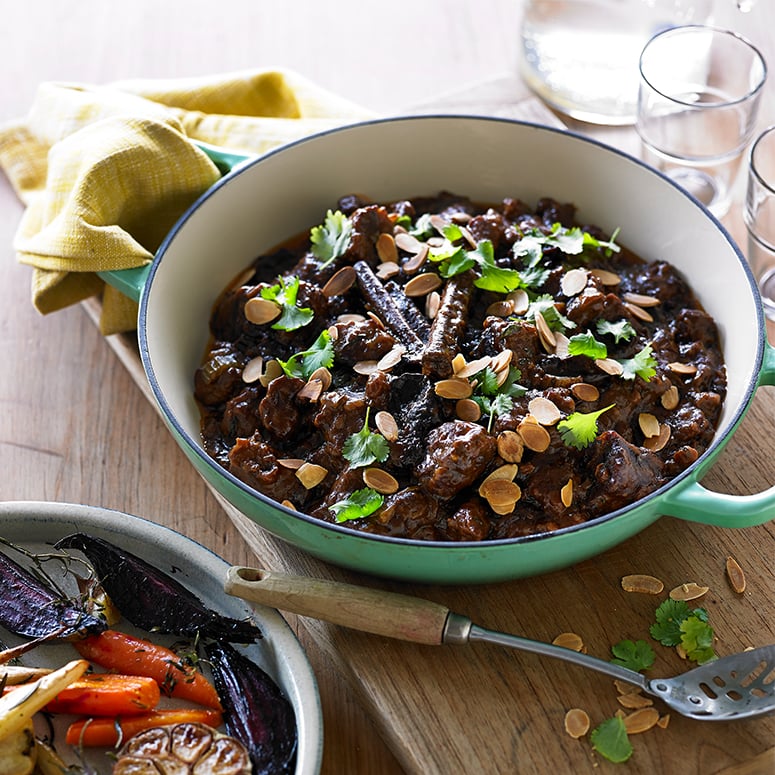Ingredients
- Serves 6
Baked root vegetables
Send me these ingredientsMethod
- Place beef and flour in a large bowl and toss to coat; season to taste. Heat oil in a large ovenproof saucepan over medium-high heat. Dust excess flour from beef and cook in 2 batches for 5 minutes turning frequently or until browned all over. Remove beef from saucepan and set aside. Pour off most of the fat and oil from the dish, leaving about 2 tablespoons.
- Preheat oven to 160C. Return dish to the heat and add extra oil, onions, celery and garlic. Cook, stirring for 5 minutes until onions are soft. Add ginger and cinnamon, and cook for a further minute or until fragrant. Add beef stock, paste, sugar and prunes, and stir to combine. Place beef back into the dish, and using wooden spoon push beef gently to submerge in stock mixture. Bring to a gentle simmer and cover with a lid; place on lowest shelf of oven and cook in oven for 2 hours or until beef is very tender.
- Meanwhile to make baked root vegetables, place all ingredients in a large roasting pan, scatter with rosemary, thyme and garlic. Drizzle with oil and season to taste; bake on top shelf of oven for 1 hour or until vegetables are golden and cooked.
- Transfer casserole to a large serving bowl and stir in chopped coriander, sprinkle with almonds and scatter with extra coriander leaves. Serve with baked root vegetables.
Tips
- Substitute dried plums with dried figs, dates or dried apricots.
- Substitute tomato paste with tamarind puree. It is available from supermarkets in the Asian section.
- Chuck steak, also known as casserole steak or braising steak, is best suited to low, slow cooking methods. Substitute with boneless shin or blade steak.
- How and why we brown beef and lamb - searing or browning the outer surface of meat, usually at a fairly high temperature develops the flavour and colour. The browning reaction happens when the natural sugar and the amino acids (the building blocks of protein) in meat are heated. Browning meat gives it a richer, deeper more complex flavour that is appealing to the eye with a wonderful aroma. Well-browned meat will have intensified flavour, this is why the first step of braising or casseroling meat is to brown the meat. This step is the foundation to a full flavoured result. Meat that is simply tossed in the liquid for a stew or braise will have much less flavour.
- Cut the meat no smaller than 2cm cubes, not any smaller as the meat will shrink as it cooks.
- Brown the meat in small batches. Overcrowding the pan with too much meat will reduce the heat in the pan the meat will stew.


